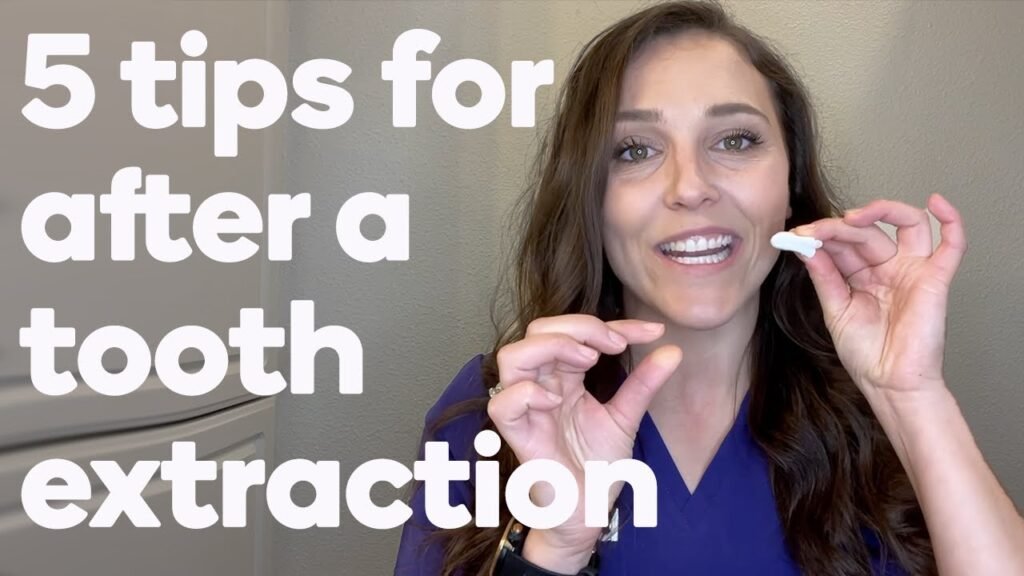Eating After Tooth Extraction: What You Need to Know

Having a tooth pulled can be a daunting experience, but knowing how to properly care for your mouth afterwards is crucial for a smooth recovery. One common concern many people have is what they can eat after having a tooth pulled. In this article, we will explore the best foods to eat, as well as those to avoid, to ensure a comfortable and speedy recovery after having a tooth pulled.
When can I eat after having a tooth extraction?
You can have something to eat about an hour after tooth extraction surgery. Remember to remove the gauze sponges first. Stick to soft foods for the first 24 hours and steer clear of hot foods and drinks for a few hours post-surgery.
Is it possible for eating to dislodge a blood clot after a tooth extraction?
After a tooth extraction, it's important to be mindful of what you eat to prevent dislodging the blood clot that forms in the empty socket. Stick to soft foods like applesauce, yogurt, and mashed potatoes for the first day, and gradually introduce slightly heartier foods on the following days. However, it's crucial to avoid soup, as the sucking motion could potentially dislodge the blood clot and lead to complications.
Eating the right foods after a tooth extraction can make a significant difference in the healing process. Soft foods not only help prevent dislodging the blood clot, but they also provide the necessary nutrients without causing any discomfort. By following the recommended diet and being cautious of the potential risks, you can promote proper healing and reduce the likelihood of complications after a tooth extraction. Remember to listen to your body and return to soft foods if you experience any pain or discomfort.
Why is chewing bad after tooth extraction?
Chewing after a tooth extraction can be detrimental to the healing process, as it can lead to pain, swelling, inflammation, and minor bleeding. To promote proper healing, it is advisable to stick to a liquid diet for a few days or opt for softer foods that won't harm the extraction site. By avoiding chewing, you can minimize the risk of complications and support a faster recovery.
Post-Extraction Eating Guide
Are you unsure of what to eat after a tooth extraction? Look no further! Our post-extraction eating guide will help you navigate the dos and don'ts of mealtime. After a tooth extraction, it's important to stick to soft, easy-to-chew foods to avoid irritating the extraction site. Opt for options like mashed potatoes, smoothies, and yogurt to ensure a smooth recovery. Avoid crunchy or hard foods that can cause discomfort and potentially disrupt the healing process. With our helpful guide, you can enjoy a variety of tasty and gentle options to keep you nourished during your recovery.
When it comes to post-extraction eating, it's essential to prioritize your oral health while still enjoying delicious meals. Our guide offers a wide range of soft and nutritious foods to keep you feeling satisfied without compromising your recovery. From comforting soups to indulgent puddings, there are plenty of options to choose from that are gentle on your mouth. By following our recommendations, you can ensure a speedy and successful recovery while still enjoying the pleasures of good food. Say goodbye to the stress of post-extraction eating and hello to a delicious and healing meal plan with our comprehensive guide.
Essential Tips for Eating After Tooth Removal
After having a tooth removed, it is important to follow some essential tips to ensure a smooth and speedy recovery. Firstly, opt for soft and easy-to-chew foods such as yogurt, mashed potatoes, and smoothies to avoid putting strain on the healing area. Avoid hot and spicy foods, as well as hard and crunchy snacks that could potentially irritate the extraction site. Be sure to stay hydrated by drinking plenty of water, but avoid using straws as the sucking motion can dislodge the blood clot that forms in the socket.
Furthermore, it is crucial to maintain good oral hygiene after tooth removal to prevent infection and promote healing. Gently rinse your mouth with warm salt water several times a day to keep the area clean and reduce swelling. Avoid vigorous brushing near the extraction site, and be cautious when spitting to avoid disrupting the blood clot. If prescribed by your dentist, take any pain medication as directed to manage discomfort and aid in the healing process.
Lastly, listen to your body and give yourself time to rest and recover after a tooth extraction. Avoid strenuous activities and stick to a diet that is gentle on your mouth until you feel comfortable enough to resume your normal eating habits. If you experience excessive bleeding, severe pain, or any other concerning symptoms, contact your dentist immediately for further guidance. By following these essential tips, you can ensure a smoother recovery process and get back to enjoying your favorite foods in no time.
In conclusion, it is important to follow these guidelines for eating after getting a tooth pulled in order to promote proper healing and minimize discomfort. By choosing soft, easy-to-chew foods and avoiding certain foods and habits, you can help ensure a smooth recovery process. Remember to also follow any additional instructions provided by your dentist or oral surgeon to ensure the best possible outcome. Taking care of your oral health after a tooth extraction is crucial for a speedy and successful recovery.